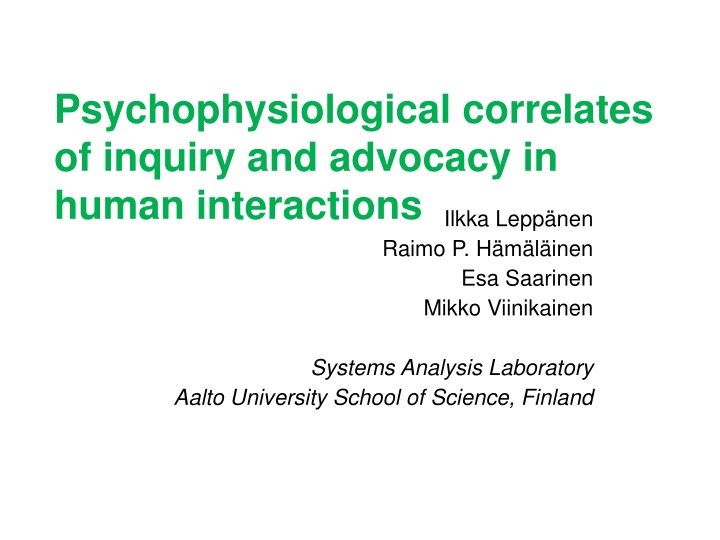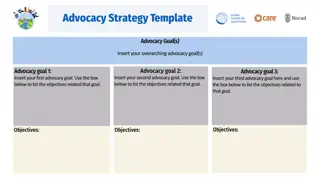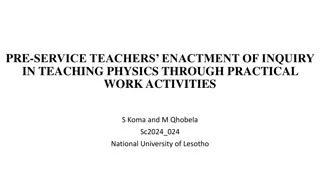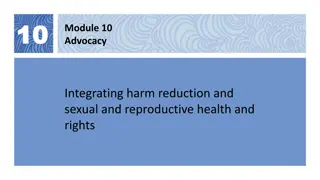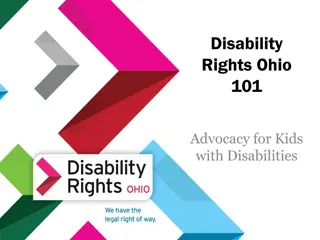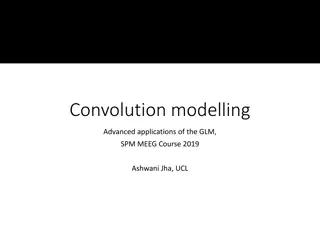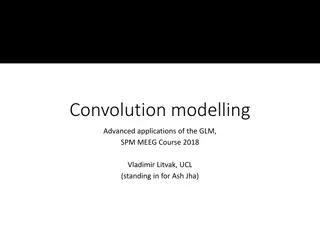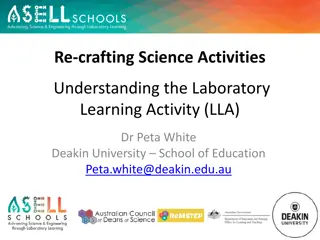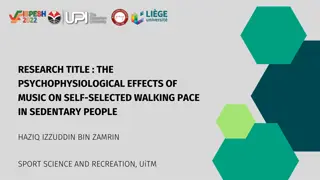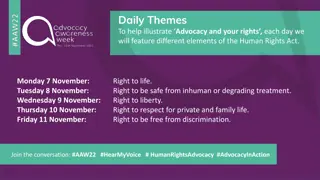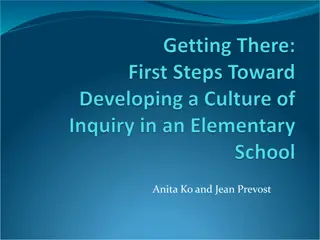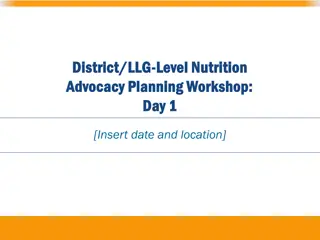Psychophysiological Correlates of Inquiry and Advocacy in Human Interactions
This research delves into the interplay between inquiry and advocacy in organizational behavior and decision-making contexts. By balancing these modes, team performance can be enhanced, leading to better quality decisions and increased satisfaction with outcomes. Understanding the emotional aspects involved in these interactions is crucial, as positive emotions have been found to foster cooperativeness and improve information processing. The experiment conducted by the researchers focuses on emotional correlates through psychophysiological measurements and assessments of emotional expressions and arousal. The study sheds light on the impact of inquiry and advocacy on group decision-making processes and the importance of managing emotions for effective outcomes.
Uploaded on Feb 16, 2025 | 1 Views
Download Presentation

Please find below an Image/Link to download the presentation.
The content on the website is provided AS IS for your information and personal use only. It may not be sold, licensed, or shared on other websites without obtaining consent from the author.If you encounter any issues during the download, it is possible that the publisher has removed the file from their server.
You are allowed to download the files provided on this website for personal or commercial use, subject to the condition that they are used lawfully. All files are the property of their respective owners.
The content on the website is provided AS IS for your information and personal use only. It may not be sold, licensed, or shared on other websites without obtaining consent from the author.
E N D
Presentation Transcript
Psychophysiological correlates of inquiry and advocacy in human interactions Ilkka Lepp nen Raimo P. H m l inen Esa Saarinen Mikko Viinikainen Systems Analysis Laboratory Aalto University School of Science, Finland
Research focus Improve structured contexts of organizational behavior and decision making Recognize that all behavior involves emotions Background: Organizational learning theory (Argyris & Sch n 1978, Senge 1990): balance inquiry and advocacy Systems intelligence theory (H m l inen & Saarinen 2004, 2008): positive engagements improve team performance 2
Inquiry: interested, explorative Ask questions, be open, explore and show interest in other s points of view Advocacy: assertive, narrow Assert, be narrow and aggressive, explain own points of view Facilitative OR intervention modes (Franco & Montibeller 2010) 3
Inquiry and advocacy in group decision making Theory, field and behavioral experiments Mason (1969), Schweiger, Sandberg & Rechner (1989), Schwenk (1990), Valacich & Schwenk (1995) Have shown that adopting both inquiry and advocacy modes improve decisions over consensus or expert approaches Higher number of possible solutions Better quality decisions Higher satisfaction with outcomes 4
Positive vs. negative emotions in DM research Importance of intact somatic processing Positive emotions increase cooperativeness, reduce conflict, lead to better outcomes than negative Negative emotions create more concessions and reciprocal punishments Broaden and build: positive emotions relate to better information processing
Our experiment Emotional correlates of inquiry and advocacy Psychophysiological measurements Emotional expressions: Duchenne smile, non-Duchenne smile, furrowed brows Emotional arousal: sympathetic ANS activation Empathy questionnaire (control) 6
Our hypotheses Inquiry elicits Duchenne smiles Advocacy elicits furrowed brows Emotional arousal level is different (non- directional) between inquiry and advocacy Empathy is related to a high frequency of expressions and a high level of arousal 7
Psychophysiological measurements Emotional expressions: electromyography (EMG) from 3 muscle regions on the left hemisphere of face Emotional arousal: skin conductance response (SCR) from left hand fingers 8
Inquiry: take an inquisitive approach on the statements of the persons shown on the screen Setup Advocacy: be critical and if possible, form objections to the statements of the persons shown on the screen Dimly lit room Comfortable chair Stimulus shown on a computer screen Hunting is a great hobby We should abandon nuclear power 9
Subjects N = 40, Mage= 34.6, 22 61 years Exclusions from data-analysis: 7 excluded because they failed to understand task (post-experiment questionnaire) 6 excluded from SCR analysis because they did not show the signal Running analysis with all 40 does not dramatically change results 10
Stimuli and treatments In each treatment the subjects are shown photographs with statements. This is the stimuli. Tasks: Inquiry: view the stimuli in an inquiry mode (series of 26 stimuli) Break 1 min Advocacy: view the stimuli in an advocacy mode (series of same 26 stimuli) Break 1 min Neutral: view the stimuli in a neutral mode (series of same 26 stimuli) Each stimulus shown for 18 s with 5 s breaks in between Order of stimuli in the series randomized in each treatment Order of inquiry/advocacy randomized for each subject, neutral treatment always last Baseline measurement before the treatments, duration 5 min Total measurement duration 38 min 11
Stimuli and treatments 26 photographs with statements 18 s 5 s 5 s 18 s In randomized order in each treatment baseline (5 min) inquiry (10 min) advocacy (10 min) neutral (10 min) randomized order
EMG electrode placements A: Corrugator supercilii contracts the eyebrow A B B: Orbicularis oculi wrinkles the eye C C: Zygomaticus major raises the cheek 13
EMG score processing 2048-Hz signal filtered to 90-200 Hz, smoothed, logarithmized Signal during stimulus averaged into 3 s bins Bin scored active if bin mean > baseline mean Bin count = sum of active bins 14
Furrowed brow: only corrugator active in a bin Duchenne smile: orbicularis and zygomaticus active in a bin Non-duchenne: only zygomaticus active in a bin 15
SCR score processing SCR has 2 components: tonic and phasic Phasic is of interest, corresponds to sudomotor nerve firing at .62 Hz 128-Hz signal down-sampled by half and smoothed, deconvoluted to extract the phasic component, integrated in a 17 s window and logarithmized => ISCR score Benedek & Kaernbach (2010) www.Ledalab.de (Matlab add-on) 16
Emotional empathy questionnaire Mehrabian & Epstein (1972) Empathy: sharing the emotional experience of others Before the experiment, 33 item questionnaire It makes me sad to see a lonely stranger in a group Some songs make me happy => Empathy score 0 100 17
Duchenne smiles in inquiry Linear mixed models (LMM) with subjects as random effects Treatments as deviation coded contrasts Ref. treatment (neutral) level not shown, moved to zero Error bars = SEM 18
Non-Duchennes in both inquiry and advocacy The difference between inquiry and advocacy is not significant (LMM, p = .79) => The non-Duchenne smile is not differentially activated in inquiry and advocacy 19
Furrowed brows show reciprocal effect More furrowed brows in advocacy Less furrowed brows in inquiry This is a known pattern of corrugator activation (Larsen et al. 2003) 20
Arousal in both inquiry and advocacy Arousal is significantly higher in inquiry than in advocacy (LMM, p < .0001) Additional hypothesis: is arousal only related to the smiles? 21
Arousal as function of the expressions: treatment effects Duchennes: constant and increasing relationship in all treatments non-Duchennes: treatment interaction effect Arousal increased in the bin count of non-Duchenne smiles in inquiry, but decreased in the bin count of non-Duchenne smiles in advocacy Furrowed brows: no relationship The Duchenne smile is possibly the only genuine internal emotional state 22
Empathy vs. emotional measures Mean empathy score 43.4 (SD 23.7) Across treatments: Only relates to non-Duchenne smiles; the higher the empathy score, the more there were non-Duchenne smiles in all treatments May imply: non-Duchennes are volitional and reflect the subject's empathic tendency 23
Summary Study the psychophysiological correlates of inquiry and advocacy modes of interaction Inquiry elicits positive emotions (Duchenne smiles) and advocacy elicits negative emotions (furrowed brows) Emotional arousal is higher in inquiry than in advocacy and related to positive emotions Empathy increases frequency of non-genuine positive emotions 24
Future research Better external validity with an actual group decision making situation Psychophysiological correlates of inquiry and advocacy in other behavioral experiments Interactive situations and strategic decision making Individual decision making Trust and cooperation in repeated interactions Role of empathy? 25
References Argyris, C., & Sch n, D.A. (1978). Organizational Learning: A Theory of Action Perspective, Addison-Wesley. Benedek, M., & Kaernbach, C. (2010). A continuous measure of phasic electrodermal activity. Journal of Neuroscience Methods 190, 80 91. H m l inen, R.P. & Saarinen, E. (2004). Systems Intelligence Discovering a Hidden Competence in Human Action and Organizational Life, Helsinki University of Technology, Systems Analysis Laboratory, Research Reports A88. H m l inen, R.P. & Saarinen, E. (2008). Systems intelligence: the way forward? A note on Ackoff's why few organizations adopt systems thinking . Systems Research and Behavioral Science 25, 821 825. Larsen, J.T., Norris, C.J., & Cacioppo, J.T. (2003). Effects of positive and negative affect on electromyographic activity over zygomaticus major and corrugator supercilii. Psychophysiology 40, 776 785. Mason, R.O. (1969). A dialectical approach to strategic planning. Management Science 15, B403 B414. 26
References Mehrabian, A. & Epstein, N. (1972). A measure of emotional empathy. Journal of Personality 40, 525 543. Schweiger, D.M., Sandberg, W.R., & Rechner, P.L. (1989). Experiential effects of dialectical inquiry, devil s advocacy, and consensus approaches to strategic decision making. Academy of Management Journal 32, 745 772. Schwenk, C.R. (1990). Effects of devil s advocacy and dialectical inquiry on decision making: A meta-analysis. Organizational Behavior and Human Decision Processes 47, 161 176. Senge, P. (1990). The Fifth Discipline: The Art & Practice of The Learning Organization, Random House. Valacich, J.S., & Schwenk, C. (1995). Devil s advocacy and dialectical inquiry effects on face-to-face and computer mediated group decision making. Organizational Behavior and Human Decision Processes 63, 158 173. 27
